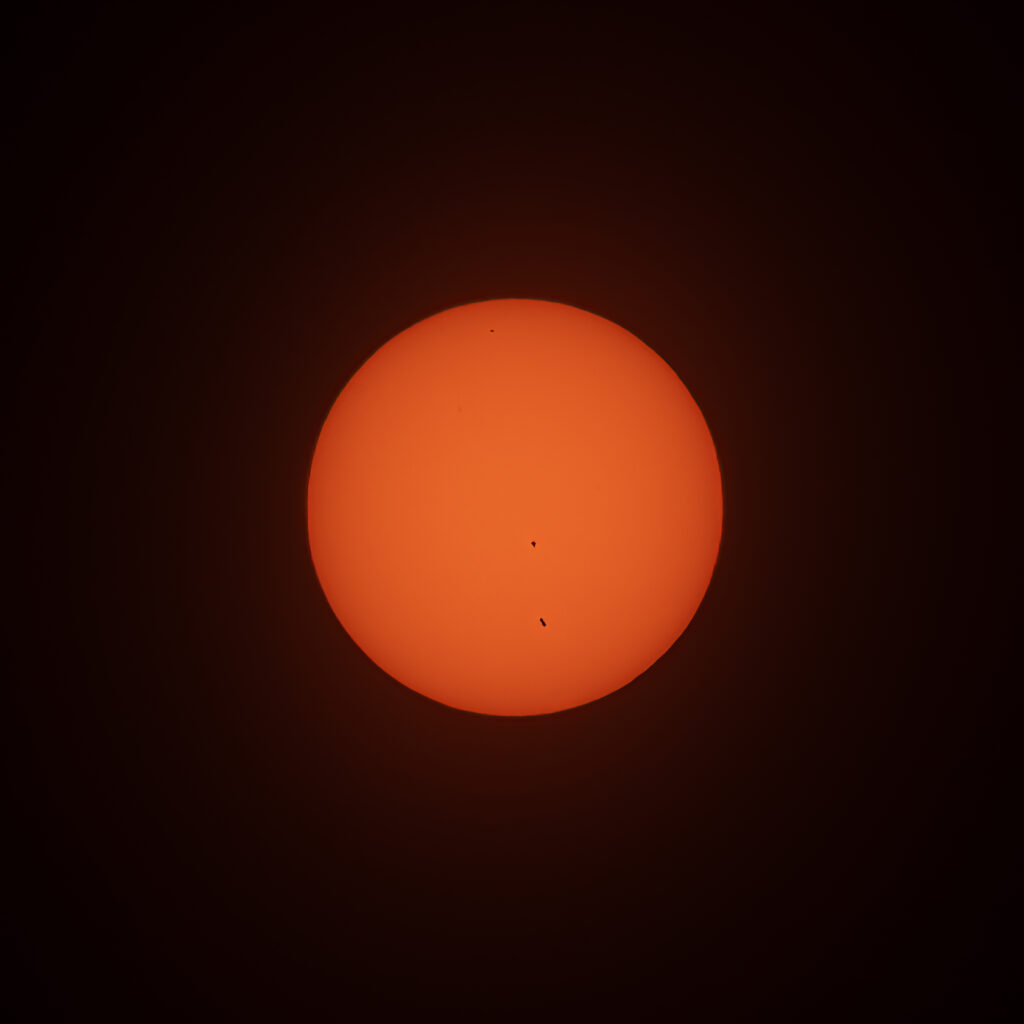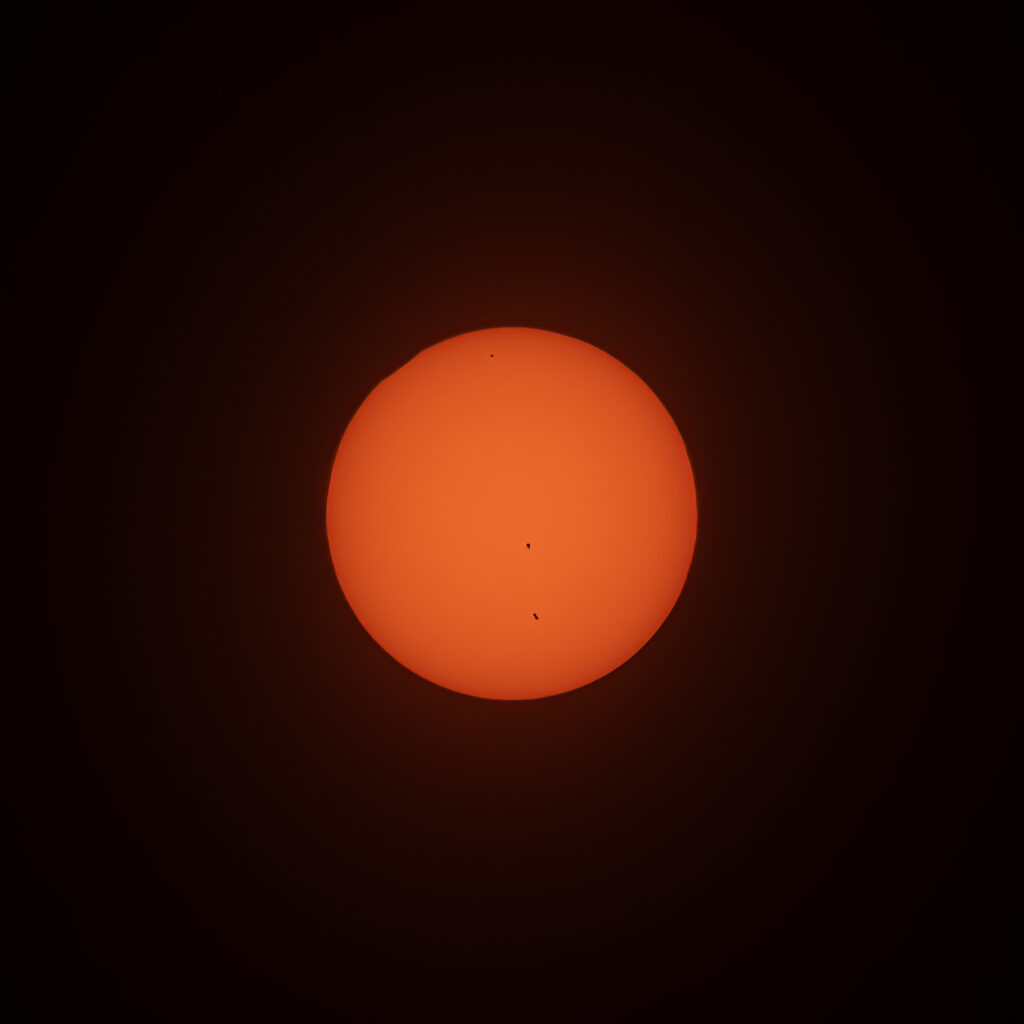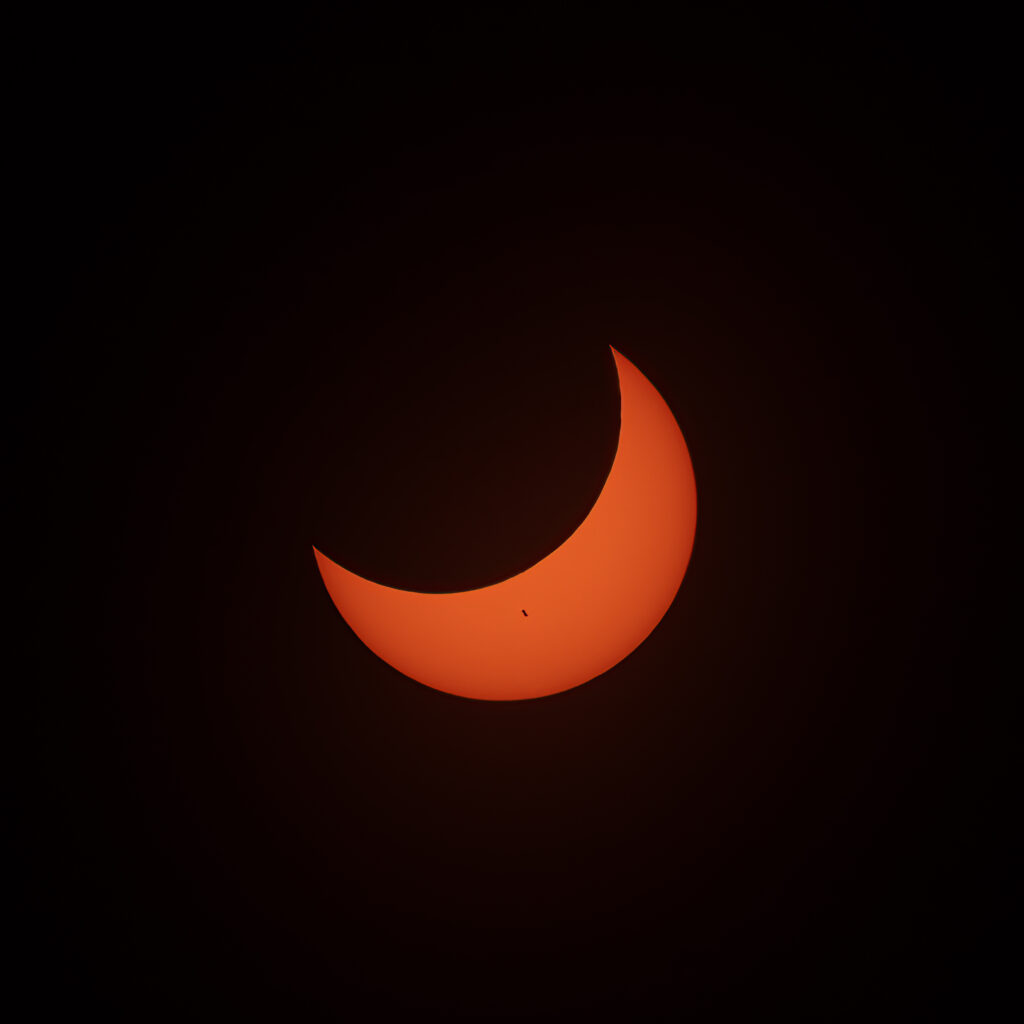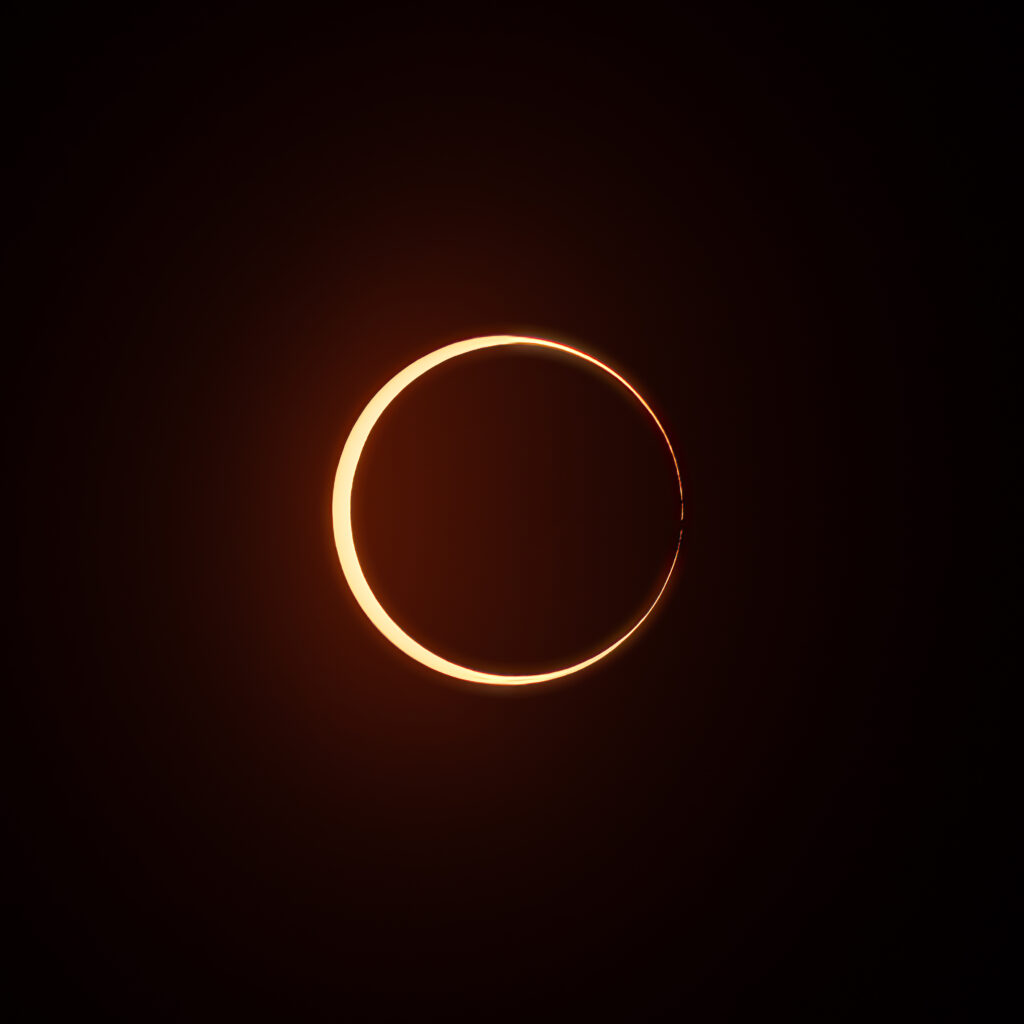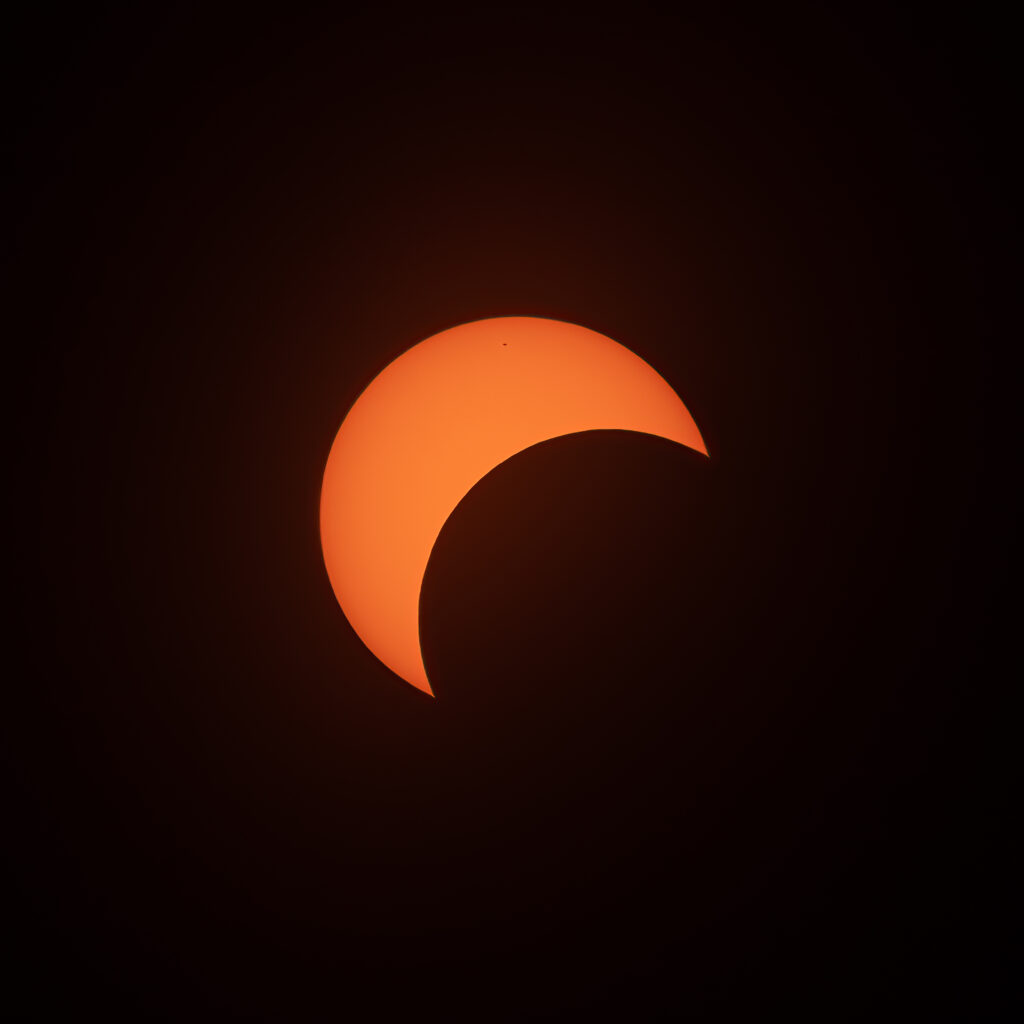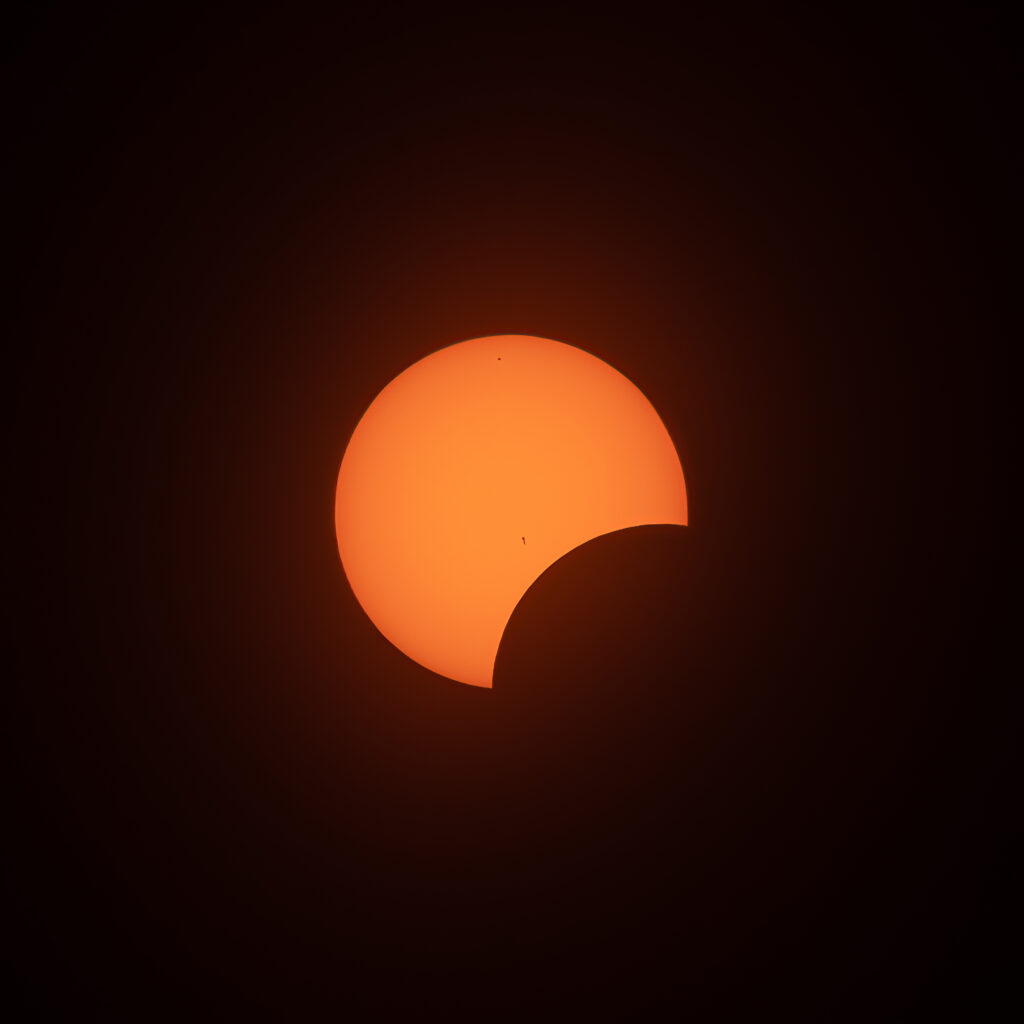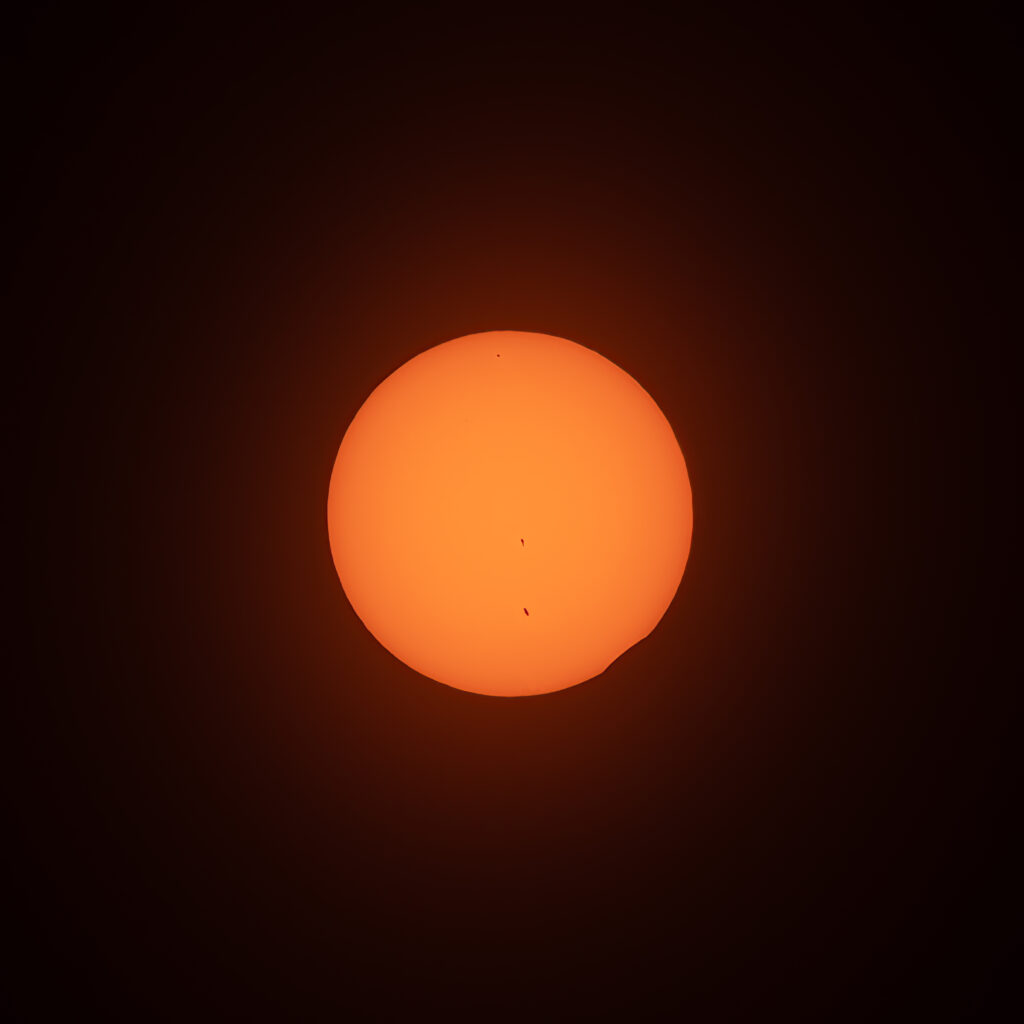
New Mexico-themed collage of images captured during the Annular Solar Eclipse from Urban Park, Los Alamos, NM on 14 October 2023
Science of a Solar Eclipse
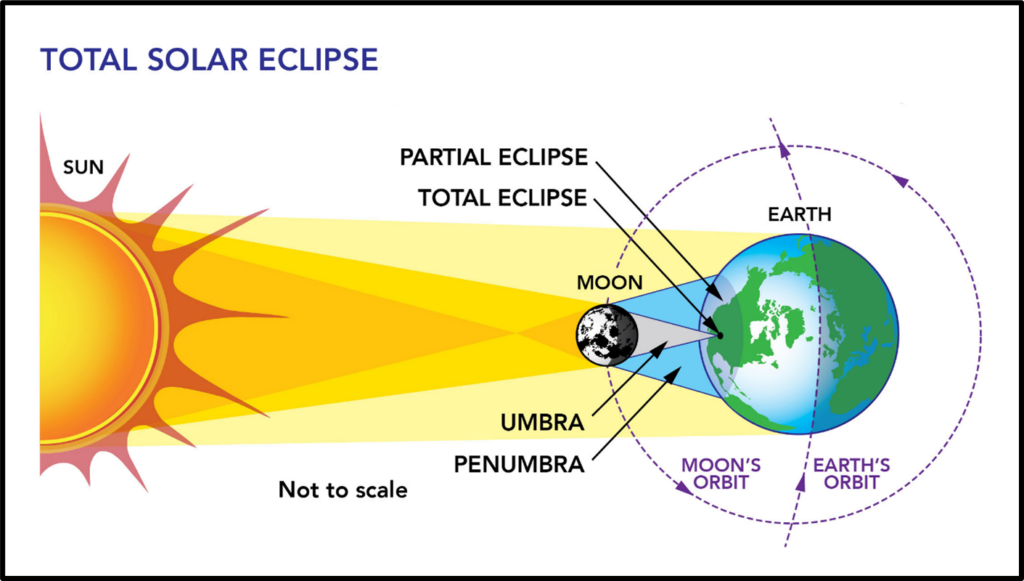
Image from: https://mynasadata.larc.nasa.gov/sites/default/files/2023-04/5661_Total_Solar_Eclipse_Shadows.jpeg
A total solar eclipse happens when the Moon completely blocks the Sun. This occurs when the Moon passes between the Sun and Earth while it is close enough to Earth that it appears to be the same visual size as the Sun. While, an annular solar eclipse happens when the Moon passes between the Sun and Earth while the Moon is at its farthest point from Earth. Because the Moon is farther away from Earth, it appears smaller and does not block the entire face of the Sun. As a result, the Moon appears like a dark disk on top of a larger, bright disk.
An annular solar eclipse has five stages:
- 1st contact: This is the beginning of the partial phase of the eclipse. The Moon’s silhouette begins to be visible in front of the Sun’s disk, as if a bite was taken from the Sun.
- 2nd contact: This is the beginning of annularity. The Moon is fully in front of the Sun and a “ring of fire” (sunlight) begins to form around it. As annularity begins, beads of light called Baily’s Beads may be seen along the edge of the Moon. These are caused by light rays from the Sun streaming through the valleys along the Moon’s horizon
- Maximum eclipse: The Moon covers the center of the Sun’s disk.
- 3rd contact: Annularity ends as the Moon starts to move away from the disk of the Sun. Baily’s Beads may be visible once again along the Moon’s edge.
- 4th contact: The partial eclipse ends. The Moon no longer overlaps the Sun’s disk. The eclipse is over.
Eclipses occur due to the special coincidence of the Moon and the Sun being the same angular size. The Sun is approximately 400 times wider than the Moon, but it is also approximately 400 times farther away, so they appear to be the same size in our sky. This is what allows the Moon to completely block the Sun during total solar eclipses. However, the Moon’s orbit around Earth is not a perfect circle, so when it is at its farthest point from the Earth the Moon will appear slightly smaller than the Sun. Eclipses that happen during this phase of the Moon’s orbit are known as annular eclipses, and the Sun is still visible in a “ring of fire” encircling the Moon. Eclipses do not occur every new moon because the Moon’s orbit is “tilted” relative to the Sun-Earth line. As a result, sometimes the Moon’s shadow is too high above Earth and sometimes it is too low. Other times, it is just right.
Equipment
Three rigs captured images every 15 seconds throughout the period before first contact until after fourth contact. During the ~5 minutes preceding and following maximum, the interval was changed to an image captured every 5 seconds. The rigs were:
- Canon 5DSR (SMB) on Southern Cross (Askar FRA600 mounted on Rainbow Astro RC-135E) with Thousand Oaks Optical S-6000 Full Aperture (Solarlite Polymer) solar filter
- Canon 5DSR (PAB#1), Tamron 150-600mm lens (at 600mm) on Sky-Watcher Star Adventurer star tracker with Thousand Oaks Optical 95mm solar filter
- Canon 5DSR (PAB#2), Canon 100-400mm lens (at 400mm) on tripod with Thousand Oaks Optical 77mm solar filter
Capture & processing notes
This was my third opportunity to image a solar eclipse – the first (21 August 2017) was our 30th wedding anniversary, the second (10 June 2021) was Paul’s sister, Joan’s, 75th birthday – this one was two days after my birthday! We (our good friends Jan & Dave, Paul, Zeus and I) traveled to Los Alamos, New Mexico (after being defeated by the NPS campsite reservation system for a spot at Chaco Canyon). We stayed at the North Road Inn which was caddy-corner across from the Urban Park, where I planned to set up to capture the eclipse. At 0620MDT (for a 0913MDT first contact), I began setting up with Dave’s help. We got everything set up (after a bit of struggle on “finding” the sun with the Southern Cross – ended up using my phone’s level on the 400mm and mimicking the angle with the Southern Cross (at Dave’s suggestion)) and starting the sequence running (at Dave’s suggestion) in time to go back to the hotel for breakfast. By the time we’d finished breakfast and returned to the equipment, the eclipse had started. Each of the rigs was set up to capture an image every 15 seconds, interestingly enough the three different solar filters required quite different exposure settings to get a similarly exposed image.
Capture: 14 October 2023, 0830 – 1230MDT
Shooting location: Urban Park, Los Alamos, New Mexico
Rig 1 (Canon 5DSR on Southern Cross with Solarlite Polymer filter): 974 images, captured 14 October 2023 0830MDT – 1225MDT. Majority of the images taken at 15 second intervals, settings: f/5.6, ISO200, 1/250 exposure. In the period surrounding the maximum eclipse, changed the interval to 5 seconds, settings: f/5.6, ISO200, 1/20 exposure. The settings produced images that were approximately 2 stops under-exposed.
Rig 2 (Canon 5DSR, Tamron 150-600mm, screw-on glass solar filter): 972 images, captured 14 October 2023 0911MDT – 1236MDT. Majority of the images taken at 15 second intervals, settings: f/11, ISO200, 1/400 second exposure. During maximum, 5 second intervals,settings: f/11, ISO200, 1/15 second exposure.
Rig 3 (Canon 5DSR, Canon 100-400mm, screw-on glass solar filter) settings: 683 images, captured 0827 – 1234MDT. (Because this was on a stationary tripod and I wasn’t being completely attentive, many of the images were unusable as the sun drifted out of the frame.) Majority of the images taken at 15 second intervals, settings: f/11, ISO200, 1/160 second exposure. During maximum, 5 second intervals, settings: f/11, ISO200, 1/10 second exposure.
Processing:
Processed the images captured with Rig 1 (Canon 5DSR on Southern Cross) to generate the collage image shown above. A sample of the individual “tiles” in the collage are also shown below
- Brought the full set of images into Lightroom
- Developed a 12″x18″ diamond-shaped template in Powerpoint
- Calculated the number of images needed (of the ~2500 captured!)
- Processed each image for the collage in Lightroom
- Assembled collage in Powerpoint
- Added text and BeersAP logo in Photoshop
